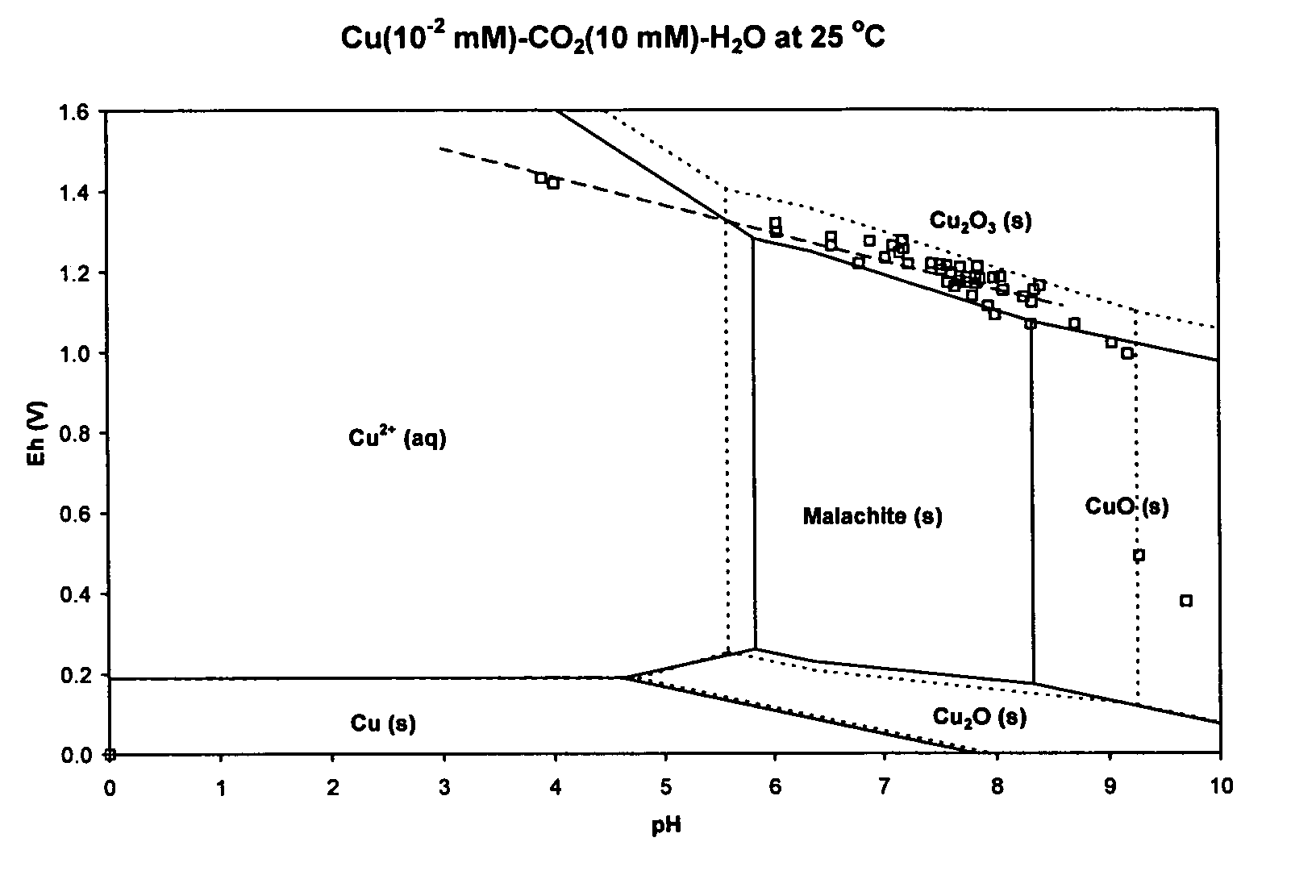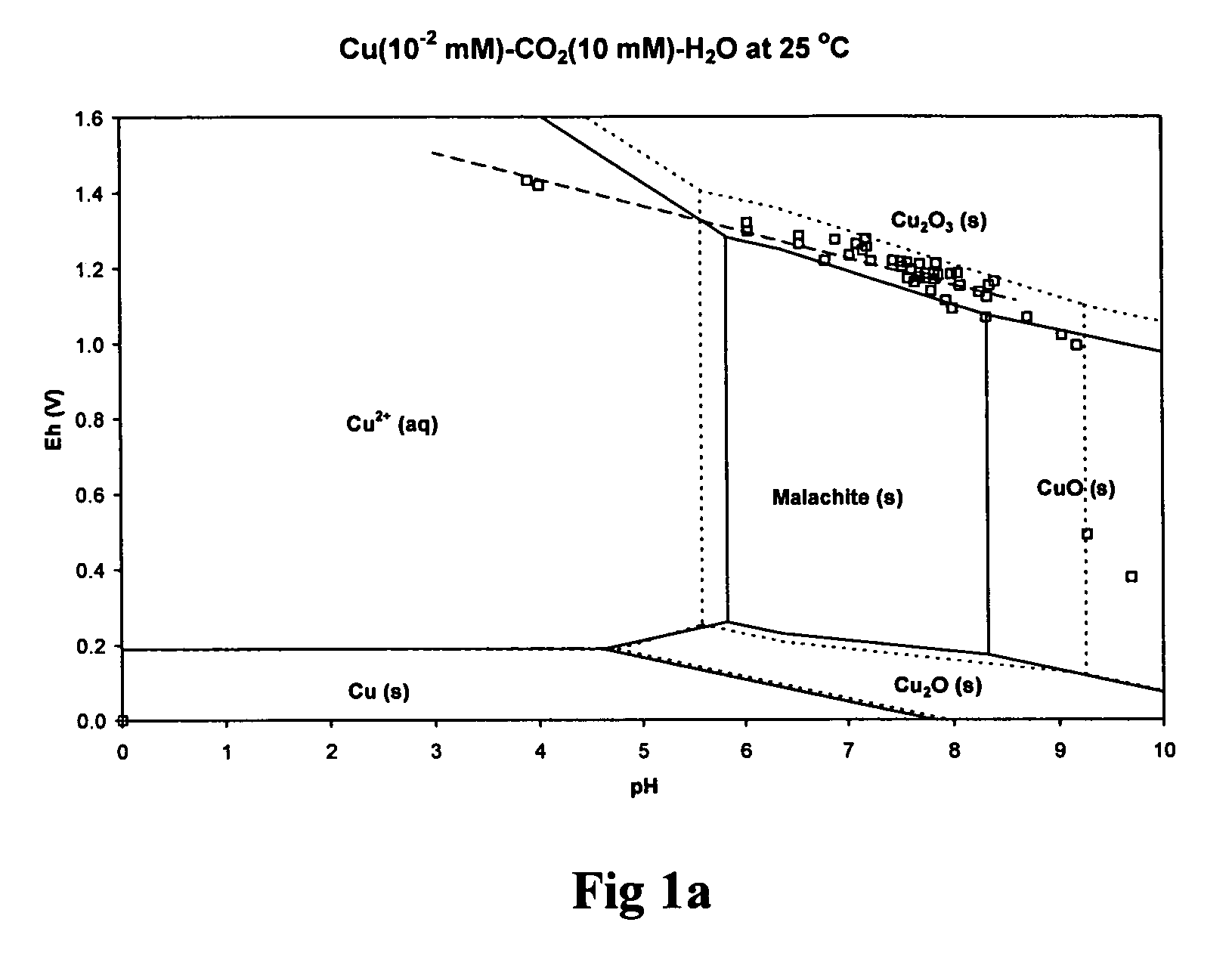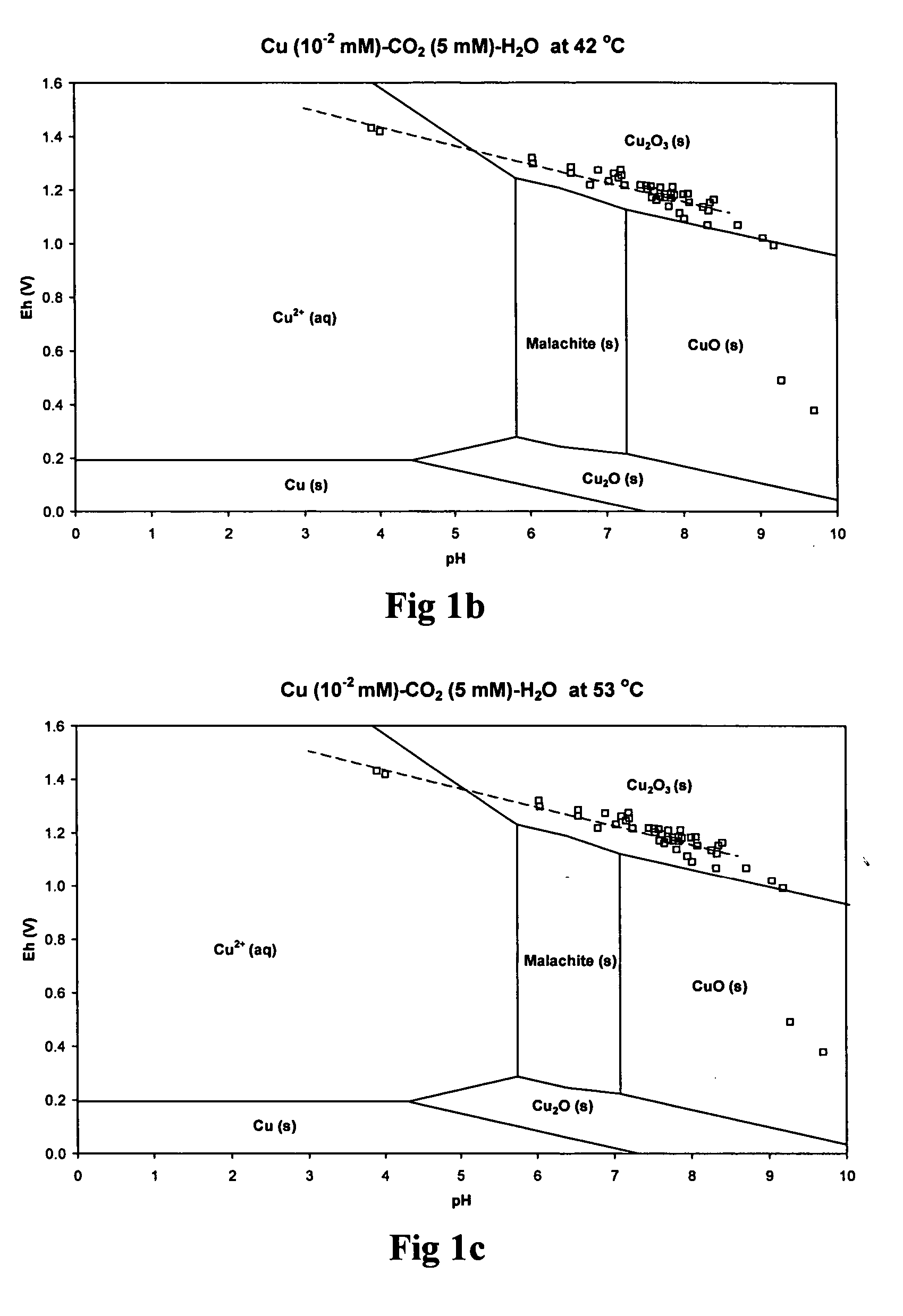Copper processing using an ozone-solvent solution
- Summary
- Abstract
- Description
- Claims
- Application Information
AI Technical Summary
Benefits of technology
Problems solved by technology
Method used
Image
Examples
Embodiment Construction
5 Ozone-Solvent-Based Treatment Compositions
[0067] 5.1 Surface Treatment Compositions—Overview
[0068] The inventive ozone-water based treatment solution can be used to treat surfaces to form a protective passivation layer on a metal, for photoresist removal, organic residue removal, cleaning, surface treatment while not etching or damaging metal films containing copper, or aluminum. In the preferred mode, this is accomplished by formulating a treatment solution with the following elements: [0069] does contain a hydroxyl radical scavenger for stabilization of the dissolved ozone concentration in solution [0070] does not contain species which react with dissolved ozone at high rates and accelerate ozone decomposition [0071] does not contain species which etch or attack copper or aluminum [0072] does not contain strong complexing agents, which can increase the copper solubility and interfere with formation of passivating copper oxide films [0073] may contain one or more species which ...
PUM
| Property | Measurement | Unit |
|---|---|---|
| Temperature | aaaaa | aaaaa |
| Temperature | aaaaa | aaaaa |
| Temperature | aaaaa | aaaaa |
Abstract
Description
Claims
Application Information
 Login to View More
Login to View More - R&D
- Intellectual Property
- Life Sciences
- Materials
- Tech Scout
- Unparalleled Data Quality
- Higher Quality Content
- 60% Fewer Hallucinations
Browse by: Latest US Patents, China's latest patents, Technical Efficacy Thesaurus, Application Domain, Technology Topic, Popular Technical Reports.
© 2025 PatSnap. All rights reserved.Legal|Privacy policy|Modern Slavery Act Transparency Statement|Sitemap|About US| Contact US: help@patsnap.com



